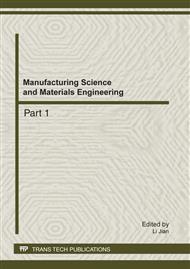p.282
p.289
p.296
p.302
p.309
p.313
p.319
p.325
p.333
Study on Piezoelectric Effect of Ceramic Capacitors in Daya Bay Neutrino Experiment
Abstract:
The Daya Bay Neutrino Experiment is a neutrino-oscillation experiment designed to measure the mixing angle θ13 using anti-neutrinos produced by the reactors of the Daya Bay Nuclear Power Plant (NPP) and the Ling Ao NPP. Eight anti-neutrino detectors (AD) consists of liquid scintillator and Photomultiplier Tubes (PMTs) will be used in the experiment. The readout signals of the PMTs which are reacted by the Neutrino need to be accurately measured for the goal of the Daya Bay experiment which needs a measurement of sin22θ13 to 0.01 or better. But ringing was found in the PMT test. This paper describes the ringing in the readout signals of the PMTs, and analyses the cause of the ringing.
Info:
Periodical:
Pages:
309-312
Citation:
Online since:
January 2012
Authors:
Price:
Сopyright:
© 2012 Trans Tech Publications Ltd. All Rights Reserved
Share:
Citation:


